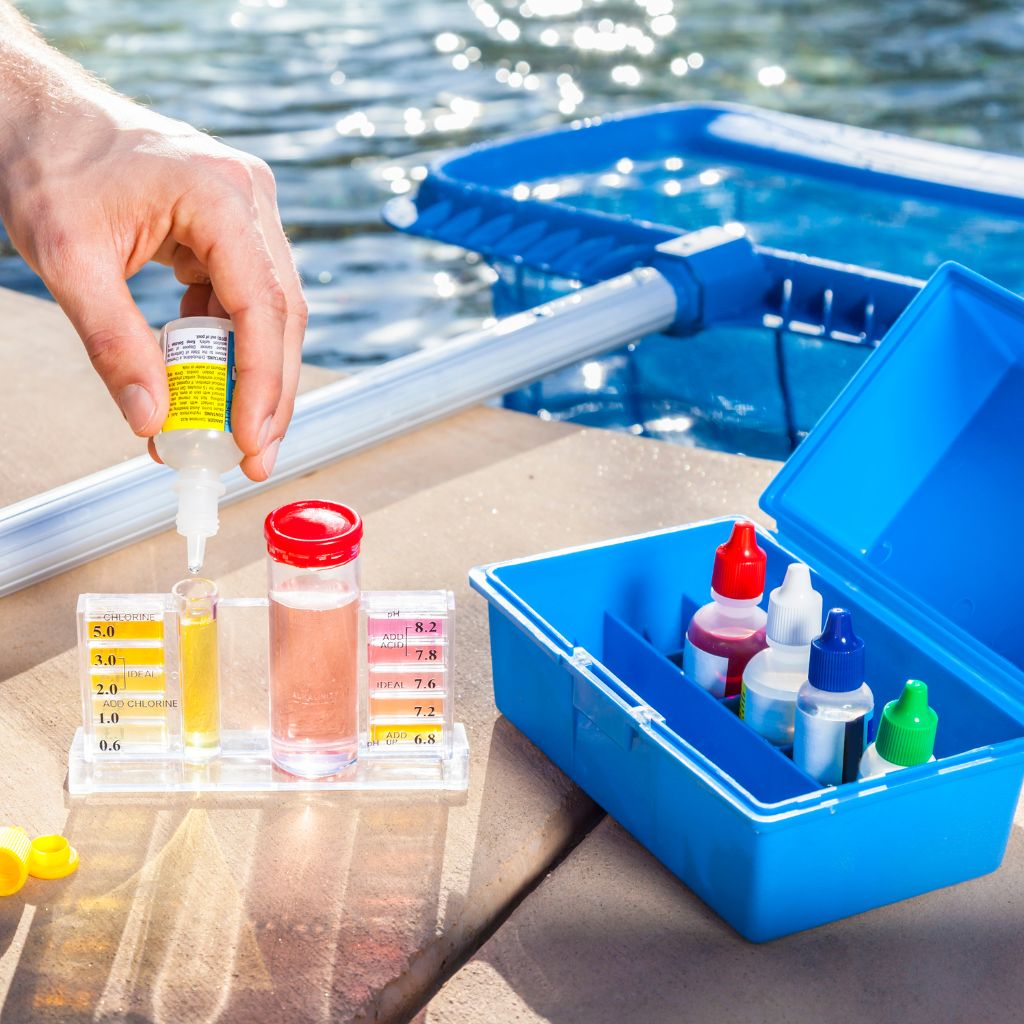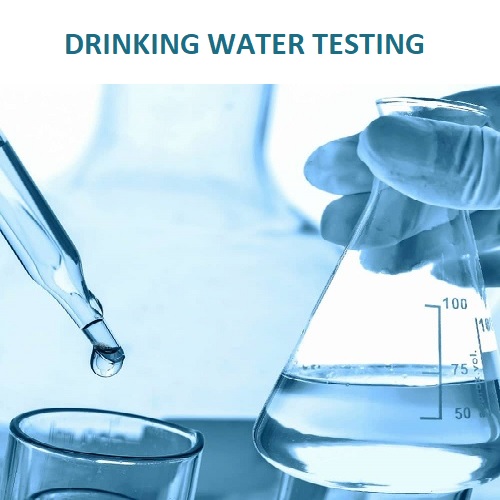Recognize the Importance of Water Testing in Maintaining Compliance With Health Standards
In the realm of public health, recognizing the relevance of water screening is crucial for keeping conformity with rigorous wellness requirements set forth by authoritative bodies like the WHO and EPA. This practice offers as a frontline protection versus the infiltration of damaging contaminants, ranging from microbial virus to harmful chemicals. What are the precise approaches used in water screening, and just how do they make sure that our most important source continues to be uncontaminated? As we discover these aspects, the broader effects for governing compliance and ecological sustainability start to unfold, welcoming further reflection on this important topic.
Trick Health And Wellness Criteria for Water
Guaranteeing the security and quality of drinking water is vital, as it directly influences public health and wellness. Stringent wellness requirements are established to guard individuals from waterborne illness and contaminants that can result in damaging wellness effects. The Globe Wellness Organization (WHO) and national firms like the Environmental Protection Company (EPA) in the USA set standards and regulative restrictions for numerous physical, chemical, and biological specifications in drinking water.
These requirements are based upon considerable clinical research and are regularly assessed to integrate new searchings for and technological advancements. Trick criteria consist of microbial impurities such as germs and infections, chemical contaminants like lead and arsenic, and physical attributes such as turbidity and pH levels. Conformity with these standards makes sure that water is without unsafe compounds and is cosmetically pleasing to the customer.
Water testing plays a crucial role in validating compliance with these health requirements. Routine surveillance and screening help recognize prospective issues before they present a substantial wellness danger, permitting timely intervention and removal. By complying with these requirements, water companies can keep public self-confidence in the safety of the neighborhood's water supply, thereby protecting public health successfully.
Common Contaminants Detected
When examining water top quality, what are the most widespread impurities that tend to be found? Microbial pathogens, including microorganisms like Escherichia coli and protozoans such as Giardia and Cryptosporidium, are often found in water resources, posturing considerable wellness dangers if ingested.
Chemical pollutants are likewise a key issue. Nitrates, typically arising from agricultural fertilizers, can lead to significant wellness issues, especially in babies. Heavy steels such as mercury, arsenic, and lead, generally presented via commercial release or all-natural natural resource, can have long-term hazardous impacts. Unpredictable organic compounds (VOCs) and chemicals, results of farming techniques and industrial activities, more contribute to water contamination.
Inorganic substances such as fluoride and chlorine, although sometimes intentionally included in water for wellness advantages, can end up being troublesome at elevated degrees. Last but not least, arising pollutants, consisting of drugs and individual treatment products, are progressively being found, increasing worries concerning their possible effect on human health and wellness and communities. Attending to these impurities is essential for securing public health and wellness and guaranteeing water quality compliance.
Methods of Water Testing
Water testing's precision is crucial for ensuring and determining pollutants safety and security conformity. Water Testing Services Near Me. To attain precise outcomes, numerous approaches are utilized, each customized to identify particular impurities and align with governing criteria. One widespread method is spectrophotometry, which gauges the absorption of light by try these out chemical substances in the water, thus identifying components like nitrates and phosphates. This technique is useful for its sensitivity and specificity.
Chromatography is another advanced technique made use of, specifically for natural pollutants. By dividing mixtures right into specific elements, it permits for comprehensive analysis of intricate toxins. Gas chromatography and fluid chromatography are frequently used versions, each matched for various substance kinds.
Microbiological testing is important for identifying pathogens such as microorganisms, pop over to this site infections, and protozoa. Techniques such as membrane layer filtering and multiple-tube fermentation are utilized to society and determine microbial presence. These methods are critical in guarding public health by guaranteeing microbial safety.

Benefits of Regular Screening
Recognizing the different methods of water testing highlights the necessity of regular testing practices to keep water quality. Normal water screening offers as a positive measure to identify potential pollutants prior to they rise right into severe health and wellness dangers. By consistently keeping track of water top quality, companies can identify contaminants such as germs, heavy metals, and chemical deposits early, enabling timely treatments that protect against health and wellness risks and expensive removal initiatives.

Furthermore, regular testing ensures that water systems adhere to well-known health and wellness requirements and regulations. This conformity is critical for avoiding lawful charges and preserving the trust fund of stakeholders and consumers. Consistent water quality assessments help identify trends or fluctuations in water composition, offering useful information that can lead functional decisions and source management strategies.
In industries such as metropolitan water food, medical care, and supply processing, keeping high water top quality standards is important to securing public health. Overall, the advantages of regular water screening extend past conformity, enhancing functional effectiveness, public safety and security, and environmental stewardship.
Tips to Guarantee Compliance
To make certain conformity with water quality laws, companies should apply an organized approach including both corrective and preventive actions. Originally, a comprehensive threat assessment must be conducted to determine potential contamination sources and vulnerabilities within the water supply. This assessment educates the development of a customized water administration plan that details particular evaluating procedures, frequency, and specifications needed to meet regulative standards.
Subsequent to the planning stage, organizations should establish a timetable for routine water testing that sticks to both nationwide and regional standards. Making use of accredited laboratories guarantees the accuracy and integrity of examination results. Any variances from appropriate water high quality requirements need to prompt immediate corrective actions, such as system cleaning, repair work, or adjustments in treatment processes.
In addition, keeping comprehensive documents of all testing activities, outcomes, and corrective activities is necessary for demonstrating conformity during audits and examinations. Routine training and updates for team associated with water monitoring processes are crucial to guarantee they understand existing policies and finest techniques.
Conclusion
Regular use this link water screening is necessary for maintaining conformity with health criteria established by organizations such as that and EPA. By identifying pollutants like microbial microorganisms, hefty metals, and chemicals, testing makes certain that drinking water remains secure. Positive tracking secures public health and wellness, sustains regulative compliance, and fosters self-confidence in water top quality monitoring. Furthermore, consistent testing promotes environmental sustainability and safeguards areas, protecting essential water sources for future generations. Compliance with these criteria is critical for the wellness of society.
In the world of public health and wellness, recognizing the importance of water screening is essential for preserving conformity with rigid health and wellness requirements established forth by reliable bodies like the That and EPA. By sticking to these standards, water companies can preserve public confidence in the safety of the community's water supply, consequently protecting public health properly.

In fields such as municipal water health care, supply, and food handling, preserving high water quality requirements is indispensable to securing public health and wellness.